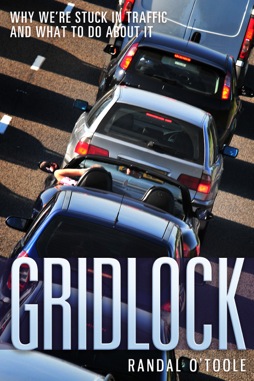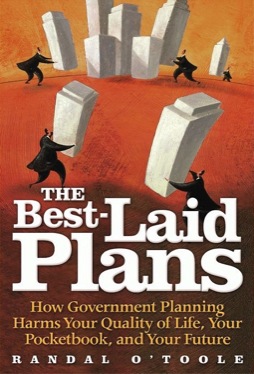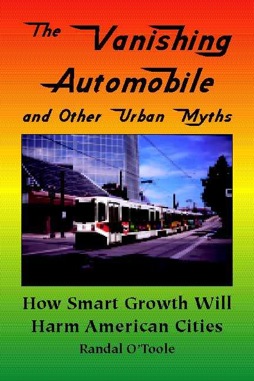New York University’s Transit Costs Project has been asking the question, “Why do U.S. transit projects cost so much more than similar projects in Europe, Asia, and South America?” A recent report from the project proposes to significantly speed up trains in Amtrak’s Northeast Corridor for only $12.5 billion (plus another $4.5 billion for new rolling stock), which is far less than Amtrak’s proposal to spend at least $110 billion in the same corridor.
Amtrak’s plan called for building a new line for the entire 457 miles between Boston and Washington. The Transit Cost Project’s plan instead proposes to fix specific bottlenecks on the current line. The result, says the project, would be trains that could travel between New York and either Boston or Washington in less than two hours, as opposed to 3 hours (New York-Washington) to 3-2/3 hours (New York-Boston) today.
The most important lesson from this report is that it inadvertently answers the original question: why are U.S. costs so high? That answer is that U.S. transit agencies, including Amtrak, always seek the high-cost solution to any problem. They have no incentive to make a profit because doing so would lead Congress and the states to reduce their operating subsidies. They have no incentive to find affordable solutions to any problem because they regard the federal government and state taxpayers as bottomless pits of money.
Instead of building a whole new line as Amtrak proposes, the project suggests some modest improvements such as $1 billion for modernized catenary that can support faster trains, $1.7 billion for capacity improvements in New Jersey, $600 million for a fourth track through Baltimore, $1.1 billion for improvements at several junctions, and $100 million to replace a worn-out bridge that Amtrak wanted to spend $4.25 billion on just to have less steep grades.
That all sounds reasonable at first glance, but the project also proposes to spend $5.0 billion on 78 miles of new line between New Haven and Kingston Station, Rhode Island. This immediately raised a red flag for me because that cost averages $64 million per mile, including bridges across several rivers. California is currently spending close to $100 million a mile building rail in the Central Valley, which doesn’t have any significant rivers to cross.
The Transit Costs Project says it bases its cost estimates on “typical western European costs.” Those are the costs that it thinks American transit agencies and Amtrak should aspire to instead of the amounts they are currently paying, which are much more. In other words, it won’t be enough for Amtrak to limit itself to the specific improvements in the project’s report; it will also have to make significant reforms to implement those improvements in a cost-effective manner.
The project’s case study of New York transit costs found three areas that made U.S. projects cost much more than European ones. First, U.S. transit agencies tended to overbuild their projects, providing much more capacity and using higher-cost techniques than necessary. Second, U.S. labor costs are much higher than in Europe. Third, poor management within the transit agencies leads to much higher planning and design costs and forces contractors tend to bid more on U.S. projects.
The project’s high-speed rail proposal addresses the first of these issues but not the other two. Since these are unlikely to be fixed any time soon, the costs projected by the Transit Costs Project should be approximately doubled. While the resulting $25 billion (plus around $5 billion for new trains) is still a lot less than Amtrak’s proposal, it is questionable whether the benefits of such expenditures can justify this cost.
This suggests that there is a fourth reason for high transit project costs in the U.S., and that is political. The political system thrives on delivering high-paying jobs to labor unions, high-cost contracts to planners, designers, and builders, and high-overhead projects to government bureaucracies. Nothing the Transit Cost Project has proposed would fix this problem.
The Transit Cost Project itself has a major blind spot, which is that it takes for granted that passenger rail is the most appropriate tool in many different situations. In fact, planes are faster and less expensive on routes such as New York-Boston, New York-Washington, and Los Angeles-San Francisco. Buses are slower but are far less expensive and cars are more convenient and less expensive over shorter distances such as New York-New Haven or Washington-Baltimore. Within urban areas other than New York, buses are superior in almost every way to rails, and even in New York the costs of new rail construction and rehabilitation of existing rail are so high that the real question should be whether the region can afford to maintain the rails it has, not whether it should build more.
I appreciate that the Transit Cost Project is examining some of these questions. If it is to be truly effective, however, it needs to take an even deeper look.









European transit has the advantage of economy of scale. That’s not a given in a transit poor country like the US. This has nothing to do with inefficieny of Amtrak. It’s economics. In addition, the US transit industry has been starved. All the transit innovation and new transit technology was developed overseas in recent decades. So transit agencies are forced to buy overseas to get adequate technology or they rely on outdated US made products. Buying overseas of course is more expensive, but it is the best decision to make to upgrade an outdated transportation system.
Of course once again, your costs analysis leaves out the increased healthcare costs that car-dependent places and thus physical inactivity causes.
Physical inactivity causes:
Cardiovascular diseases: (e.g., heart disease, stroke, high blood pressure) – often the highest cost category.
Type 2 Diabetes: A significant contributor to healthcare expenditure.
Cancers: (e.g., colon, breast, endometrial, gastric, esophageal, renal)
Dementia: Accounts for a disproportionately high percentage of costs despite a smaller number of new cases.
Depression and Anxiety Disorders: Also contribute to the economic burden.
Musculoskeletal diseases and injuries
The global cost of inaction on physical inactivity is estimated to be approximately US$47.6 billion per year. If current trends of physical inactivity continue, nearly 500 million new cases of preventable non-communicable diseases (NCDs) and mental health conditions are expected to occur globally between 2020 and 2030. The direct healthcare costs for these conditions are estimated to reach US$520 billion annually by 2030.
Prior Estimates: In 2013, the worldwide economic burden of physical inactivity was estimated at US$67.5 billion annually, with US$53.8 billion attributed to direct healthcare costs. Of this, the public sector paid 58% (or US$31.2 billion), the private sector paid US$12.9 billion, and households paid US$9.7 billion. Inadequate levels of physical activity are associated with US$117 billion in annual healthcare costs. In the US physically active adults spend nearly US$1,500 less per year on healthcare than inactive adults. That is on top of all the TCO ($2.2 trillion).
Europeans are poor:
Are People in Mississippi Really Richer Than People in Europe?
Analysis on states’ average disposable income and European countries’ average disposable income per household for the same year, according to the World Population Review, the United States’ average was higher than even the wealthiest European country, Luxembourg.
While the U.S. average disposable income for 2022 was $51,147, per the World Population Review, Luxembourg, the most well-off European country, brought in an average of just $44,773. All other European countries had an average far below that.
Newsweek | Apr 30, 2025
Haha, you’re confusing income with quality of life. Just as an example, a war increases national income. A natural disaster increases national income. Obesity increases national income (due to increased healthcare spending and food consumption). A catastrophically inefficient healthcare system increases national income. The US performs worse than Europe on virtually every measure of quality of life. Life expectancy is below European standards. Another example, many Americans are buying bottled water, because tapwater in the US is often undrinkable. Europe has drinkable tapwater, so there is no need to buy overpriced bottled water, but the production and consumption of bottled water increases the income of Americans so they can afford bottled water. Americans eat a lot of food. Many Americans are obese. The production and consumption of food increases the incomes of Americans. The increased healthcare costs due to obesity and its derived illnesses again increase the income of Americans. But none of this adds real value. Income is an abstract number that just reflects what has been produced and consumed. It doesn’t tell you anything about the quality of what has been produced/consumed. Americans are producing and consuming a lot of useless stuff, which evidently does not higher their quality of life and their life expectancy, but on the contrary, it does lower it. Comparing income numbers between the US and Europe is complete nonsense, especially since Europeans spend way less time at work and enjoy much more vacation and free time. What’s the point of working if you don’t have any time to enjoy your fruits until you have become old? According to a 2024 survey by SingleCare, 43% of U.S. adults are currently taking medication for their mental health. This says it all.
Weird:
The Netherlands and the Marshall Plan
The Netherlands received $1.13 billion in Marshall Aid. With $109 per capita, the Netherlands belonged to the group of countries in Western Europe that received the most Marshall aid.
The Marshall Plan enabled Netherlands to import goods. The largest contributions for industry went to food production (for example, the flour factories of Koopmans in Leeuwarden), textile (TenCate in Nijverdal, Spanjaard in Borne and Van Heek in Enschede) and the aviation industry (KLM, Fokker). Steel producer Hoogovens in Ijmuiden could purchase special equipment. In Geertruidenberg, Noord Brabant, the new Amer power plant was built to supply the nation with energy. ENCI (Eerste Nederlandse Cement Industrie) in Maastricht, was able to expand in order to keep up with increasing demands in the building industry. In total, half a million dollars were invested in the cement industry. Therefore, the production level could rise with 70 percent. The Dutch State Mines were enabled to expand their chemical industries. The electrification of the Dutch railway system could grow rapidly.
A good example of “Marshall Plan in action” are Piet and Reinier Dobbelmann from a soap and toothpaste company in Nijmegen, who completed a study tour to the U.S. in 1948. Whilst in the U.S., they became enthusiastic about American machines that they purchased with the aid of the Marshall Plan. This led to an enormous increase in productivity.
BTW. $1.13 billion in 1947 is $15 billion in today’s dollars. You’re welcome. And please don’t start shooting at your fellow Europeans. We won’t bail you out again.
In other words, the US economy was provided a new market for their products with help of the US government and military. It’s called colonialism. Do you really believe, that the current state of Dutch infrastructure is the result of the Marshall Plan? The Netherlands and many other European countries survived many catastrophic events and rebuilt themselves in the past, before the US was even a thing. It was the talent and inventiveness of the Dutch and the Europeans in general that created the most prosperous continent on earth with the highest quality of life mankind has ever seen. The Marshall Plan was mainly a subsidy for the US industry after WWII as an attempt to keep the European industry weak. Which didn’t work out as we know today. Today the EU has a trade surplus with the US, because European products simply have a higher quality than their American counterparts, who are unable to compete in the higher price range on the international level.
It was the Dutch who remained neutral in WW1, subsequently making out like bandits selling stuff to Germany during that war and, after much of Western Europe was destroyed, “neutral” Holland really made out selling stuff to the rest of Europe:
Despite making out like bandits, you couldn’t bring yourself to spend any money on defending yourselves:
The Nazi Invasion of the Netherlands: How a Country Fell in Days
Since 1945 you’ve been sucking off the teat of the US taxpayer who’ve been defending you from the Bear for the past 80 years while you spend your € on lavish welfare programs. Today the EU has a trade surplus with the US, because Europe is a weak sister, it can’t defend itself, and their idiotic decision to switch to unreliable power has led them to deindustrialize. Your “carbon footprint” hasn’t really dropped, instead you’ve simply outsourced your carbon emissions to the People’s Republic of China.
Much of Europe, especially Northwest Europe, has become a museum. It’s a shadow of its past.
So, the Netherlands has better bicycle infrastructure, because it lost WWII against much stronger and bigger Germany? And EU trade surplus exists, because the US has some military bases in the EU? The EU followed the US into needless wars in the middle east. When the US was attacked at 9/11 many EU countries helped the US fighting Al Quaida and the Taliban in Afghanistan. Some EU countries even supported the US iraq war. The EU still has much more industry than the US and a much lower carbon footprint also. If the EU is a museum, why does it have superior infrastructure and higher quality of life? The US is a museum of car-dependent 1950s.
So, the Netherlands has better bicycle infrastructure because 1) it’s poor and lower proportion of its citizens can afford to buy and operate a car and 2) it’s poor because it has to import almost 90% of the primary energy it consumes.
That’s a joke, right? It took you all of five days to fold to Hitler during the last big European shooting war. Queen Wilhelmina and most members of the Dutch government fled to England while the rest of you helped the Nazis deport 107,000 Dutch Jews, of whom 102,000 were murdered. Over one thousand Americans lost their lives on Dutch soil.
Another joke? The U.S. produced US$ 2.8 trillion of of manufactured goods last year vs. the EU’s US$2.2 trillion, despite the EU having 100 million more people.
You’re living in a 19th century museum.
The Dutch are very rich. They have clean drinking water, they are well fed, get all the needed medical care regardless of income, they have a roof over their heads, furniture, dishwashers, reliable electricity and basically everything a human need to achieve one of the highest life expectancies in the world. They even have motor vehicles, but the best thing is, they have very liveable cities, with excellent bicycle infrastructure, where one doesn’t have to buy a car. Ironically the Netherlands has even better roads and highways than the US. Your way of measuring standard of living by income numbers and the number of cars is seriously flawed. It doesn’t account for wasteful spending, that doesn’t do anything to improve people’s lifes. For instance, producing painkillers does increase the household income. So if more people have pain as more painkillers are produced and as higher the household income. But there has been no value added overall, because it would have been more productive to avoid the pain in the first place. And that’s what European countries are doing much more than what the US is doing. The American way of life produces a lot of pain and by doing so it produces higher incomes, but it doesn’t add any real value to people’s lifes.
The US supplied the Nazis as well with raw materials, chemical products and guess what, cars and trucks for the Wehrmacht. The Netherlands is a small country. It had no chance against Nazi Germany. Five days can be a long time, when your cities are bombed to ashes.
The US lost almost its entire industrial base. Current US manufacturing consists mostly of final assembly of prefabricated and imported parts. On average, 60% of the car parts of a car that is produced in the US are imports. There is much more original manufacturing in the EU, especially in Germany. The EU just outsourced simple manufacturing and focussed on high end manufacturing like complex machinery and luxury goods.
Is there anything so important going on in that area that requires so much to be spent for so few?
fake? New Jersey’s population has generally seen growth over the past few years, with international immigration playing a significant role. While the state has experienced a net loss of residents through domestic migration, overall population has increased due to international immigration…… NY State 2010 Population
19,399,956
2022 Population
19,677,151
Population Change
+ 1.4%
In less than decade Europe has become gang rape capital thanksnto so called International immigration.
I’d rather live in Mississippi…
Missisippi which has a several times higher crime rate than Europe?
I wrote a long time ago why projects less expensive.
USA we have property rights.
Asia/South America they have slave labor
Why do Americans think that only the US does have property rights? Absurd thinking.
Why do so many leftist Europeans think they can do without American imports?
In 2023, the U.S. accounted for 10.6 percent of all Dutch goods imports, a significant increase from 8.5 percent in 2022. Only Germany maintained a larger share of Dutch imports, representing 16.9 percent, with Belgium and China following in third and fourth positions, respectively.
One of the primary drivers of the rise in U.S. imports was the growing demand for American energy resources, particularly crude oil and liquefied natural gas (LNG). In 2023, Dutch companies imported 12.2 billion euros worth of U.S. crude oil, marking a remarkable 51 percent increase over the previous year. Imports of LNG from the U.S. also saw a substantial rise of 2.4 billion euros.
The United States also held its position as the largest destination for Dutch exports, with 33.8 billion euros worth of goods sold to American markets in 2023, a slight increase from the previous year. This mutual trade growth demonstrates the resilience and vitality of the U.S.-Netherlands trade partnership, contributing to both economies and supporting industries on both sides.
It may be that old, leftie Europeans are still pining for the days of the Union of Soviet Socialist Republics idiocracy. Or maybe they have the sadz because the remaining idiocracy – Communist China – is on the ropes after both the EU and US slapped tariffs on their totalitarian commie asses.
The United States and Europe could have a mutually profitable trade relationship. Why not embrace it?
US Business Migration Grows: Europe Loses Top Startups in 2024
New Yorks MTA has a 19 billion dollar budget. 6.2 billion more than just 15 years ago. They also have 70,000 employees. Of which subway 50,000. Average yearly personnel cost MTA employee is 100K dollars. Meanwhile Tokyo metro subway moves 3x more passengers on roughly same amount track woth none issues. If MTA hadn’t become a state jobs program, you could lay off half the MTA staff.
By shedding billions in labor costs, fares could be nothing and they’d still have 5 billion a year for upgrades and overhaul.
Bad news for China fans: trains are destroying the commercial air travel business there. This is what happens when your economy is run by Communist planners that neglect peoples’ desire to drive everywhere.
https://www.scmp.com/economy/china-economy/article/3311483/chinas-airlines-raise-alarm-travellers-ditch-planes-bullet-trains
“The shift to rail has become so pronounced on the busy Beijing-Shanghai route that China’s air travel industry has warned its market is being “eroded”, with airlines scrambling to lure back customers with cheaper tickets and free limousine services.”
What shift. More Chinese drive than take trains.
The shift from air travel to trains. You know the shift the article is talking about? Chinese cities are fighting against the ills of cars => congestion, noise, pollution and safety issues for pedestrians/cyclists. Sooner or later will go back to bicycles if they want to increase their quality of lives.
Both China’s air and rail are state owned industries. More so both fraught with problems from airlines galling apart and crashing, poor build quality.
It’s trains fall apart
https://m.youtube.com/watch?v=jQ5tKr_y4BA
As for quality life what good is any transport system when 230 million are banned from travelling freely due social credit systems.
Systematicvisionary jerking it to his Mao books
LazyReader, I found it – video documentation of a Beijing -> Shanghai train falling apart WITH PASSENGERS ON BOARD! Not for the faint of heart (especially around the 8:11 mark)
https://www.youtube.com/watch?v=smTn-8zMPL4
“Business travellers especially are increasingly viewing the tofu dreg rail as a superior option, experts said, with China Railway’s fastest service now able to travel the 1,300-kilometer route in just over four hours.”
https://archive.ph/ckD9q
“Many tend to avoid air travel since having to go offline on a flight can be a deal-breaker, as they need to make full use of the journey to stay connected and do some work,” he added.
Old news.
“Upgraded, high-speed Wi-Fi is available to buy on select domestic flights. Browse the internet, check emails and stream video services like Netflix, Hulu and HBO faster than ever before.”
https://www.aa.com/i18n/travel-info/experience/entertainment/wi-fi-and-connectivity.jsp
Airplanes are still faster than rail. Quieter too. Have you ever spent time near a high-speed rail track? I have. They’re loud! And low speed freight-rail is not something you want to live near either.
Top speed of anything to improve ridership is a canard. The overall experience is what matters the most.